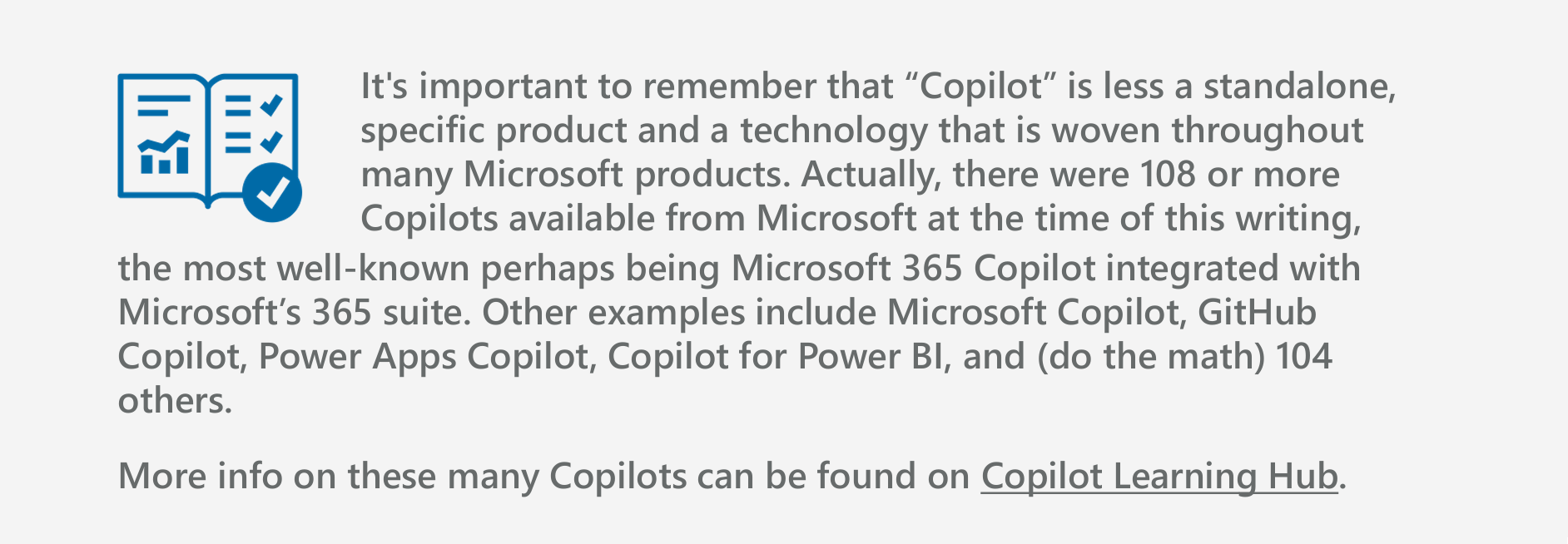
Trustrorthy AI
Knowledge Base
Incremental AI
Incremental AI is a broad, conceptual category of workloads in which AI is applied to bring speed, efficiency, scale, accuracy, quality, etc. to activities that a human would have otherwise performed.
Microsoft’s Copilots generally fall squarely into this bucket as they help their end user to reason over information more granularly, identify highest-potential sales targets more accurately, create content more quickly, book appointments more efficiently, write code more effectively, recap meeting action items easily, etc. These use cases tend to share two things in common:
• They apply artificial intelligence to scenarios that were already being performed by a human, and would have gone on being performed by a human with or without AI;
• They are often* performed in support of the organization’s overall purpose, not as the organization’s primary function.
* Big asterisk here, so let us explain what we mean by comparing the “book meetings more efficiently” and “write code more effectively” examples above.
In the case of the former, organizations do not typically exist for the purpose of having meetings (though there are days that this would feel like revelatory news to many of us), so booking an appointment is a necessary task which creates the medium through which a service is provided; but is not the service itself. This is a typical scenario for so-called incremental AI, that AI acts as a “Copilot” helping the human cut through various tasks to get to the real point of their work. At the risk of being called out here, we will acknowledge that there are some cases - such as AI writing code for a developer at a software company - where AI is actually creating the products or rendering the services that are the ends, rather than a means to the ends. It’s a bit of a semantic discussion, but worth keeping mind as you organize your thoughts.
In any case, the central question to ask yourself, your colleagues, and those formulating your AI strategy is, “Which activities currently being performed by humans could we make better in ABC ways by turning some or all of the task over to AI?”
These answers will often come easily, but it’s worthwhile to cast a wide net to ensure you’re maximizing the potential of AI in your incremental workloads. Consider…
• They apply artificial intelligence to scenarios that were already being performed by a human, and would have gone on being performed by a human with or without AI;
• They are often* performed in support of the organization’s overall purpose, not as the organization’s primary function.
* Big asterisk here, so let us explain what we mean by comparing the “book meetings more efficiently” and “write code more effectively” examples above.
In the case of the former, organizations do not typically exist for the purpose of having meetings (though there are days that this would feel like revelatory news to many of us), so booking an appointment is a necessary task which creates the medium through which a service is provided; but is not the service itself. This is a typical scenario for so-called incremental AI, that AI acts as a “Copilot” helping the human cut through various tasks to get to the real point of their work. At the risk of being called out here, we will acknowledge that there are some cases - such as AI writing code for a developer at a software company - where AI is actually creating the products or rendering the services that are the ends, rather than a means to the ends. It’s a bit of a semantic discussion, but worth keeping mind as you organize your thoughts.
This is ultimately a workload prioritization and road mapping activity (reference the earlier Workload Prioritization dimension), so we recommend having a look at Andrew Welch’s “ One Thousand Workloads ” piece from several years ago (which addressed road mapping for Power Platform but is also quite applicable here), as well as more recent thoughts on “Workload Prioritization” which you’ll find in his “Strategic thinking for the Microsoft Cloud ” piece from early 2023. The workloads that make it onto your roadmap should absolutely be included for implementation as part of your AI strategy.






